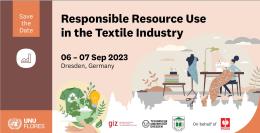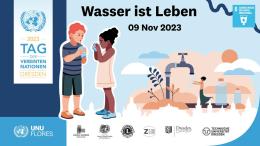The Case for Reform
Few question that the United Nations is in need of serious reform. At 70 years old, the deep mismatches between its structure, its governance, its funding flows, and its tasks mean that it struggles to fulfil its mandates.
Yet the need for the United Nations is greater than ever. There is a continued demand for the UN to play a global role in development, even as new forms of cooperation proliferate. The adoption of the Sustainable Development Goals in September, and the climate agreement in Paris demonstrate the unique ability of the UN to provide a platform for countries to unite for a higher purpose.
A phalanx of reform processes have tried, with varying degrees of success (as UNU-CPR has explored for humanitarianism, peacebuilding, and peacekeeping) to grapple with reforming the United Nations. But the fragmented nature of these efforts echoes in the very siloes that need to be dissolved. There is a humanitarian summit, a peacekeeping review, a peacebuilding review, and a new development agenda, but very limited coherence across these parallel tracks, and very little strategic reflection on the UN’s role in development.
Agenda 2030 seeks to “shift the world onto a sustainable and resilient path.” It provides an overarching frame for Member States, and for their United Nations for the next 15 years. The lead role in implementing the Agenda remains with countries, cities, and their citizens. But the UN clearly has a supporting and enabling role to play, perhaps most critically in conflict-affected countries where most of the world’s poor will live by 2025.
Our work on the governance and structure of the UN Development System (here and here) and on the need for strategic thinking on conflict issues (here), has called for Member States to respect the age-old adage that form should follow function, and answer a simple question: What functions do they want of the United Nations?
Yet despite the critical need for reform, despite the plethora of thematic reform efforts, and despite the financial pressure that should drive the United Nations to embrace the SDGs – or perhaps because of these very reasons – neither the Member States nor the UN have begun to answer this question.
Over the last year, we have been fortunate to support most of these reform efforts, and the ECOSOC dialogue. And from these discussions, I see four key roles, and two responsibilities emerging:
Roles for the United Nations in Implementing Agenda 2030: 4 C’s
-
Champion: The United Nations is an inter-governmental body. And one of the key competitive advantages of an inter-governmental body is that it can offer a place for States to show off their successes. This is not just valuable in that it makes senior diplomats feel good about themselves (though that, in and of itself, may be more valuable than people suspect). Agenda 2030 is implausibly complicated. Finding Member States who can show to the world, and to other states how and where they have managed to make achievements will help.
-
Connector: The United Nations itself will not achieve Agenda 2030 – nor a single one of the SDGs. Other actors – states, cities, individual citizens, companies large and small, civil society – will do the hard work. But the more that the UN can use its special legitimacy and convening power to connect new forms of cooperation, new ideas and innovations, and new actors who share common agendas and common struggles, the more it can help. This should not be rhetoric. Concrete platforms for regional exchanges, for extending and expanding new forms of development cooperation, and for building new partnerships require effort and attention, and the UN’s neutrality and reach make it well placed to play a role in these.
-
Catalyst: The United Nations is not associated with risk taking. But the risk of failing to set the world on a path to sustainable development means that the UN has to transform itself and embrace and enable risk. The UN Peacebuilding Fund, which is providing ‘catalytic’ finance is the right model; Member States should scale up this and similar instruments and focus the UN on providing catalytic finance in the area where it has the greatest ability and expertise: fragile and conflict-affected states. This is where the hardest work will need to be done to achieve the agenda, because it is where most of the world’s poor will live.There is also a potentially critical role in blending the UN’s catalytic and connective functions to support multi-stakeholder partnerships – finding a way to build coalitions of actors to deliver results – think GAVI, a public-private partnership, for specific targets within the SDGs.
-
Crisis Manager: The competitive and comparative advantage of the UN remains strongest in situations of conflict and crisis. Member States consistently call upon the UN to play this role – to help countries manage the risks of falling back into conflict, and to prevent future disasters. In this area, where the majority of the UN’s operational efforts are, the UN struggles – hence the series of reviews over the last year. In part, this is because discussions about resilience, prevention, recovery and transition are ultimately about the same issue: how can the United Nations better support countries to reduce the likelihood of a crisis occurring or recurring, and mitigate the impact when it does? And fundamentally, the United Nations was (and is) not structured and enabled to adequately play this role.
In addition, the UN has two ‘normative’ responsibilities:
-
Rights-based development: The United Nations is a normative organization, and its charter is its strength. The entire SDG agenda rests on the idea of rights and obligations, and the more the UN can strengthen the concept and practice of human rights as part of every-day discourse on development, the more successful it will be. It does not need new instruments or mandates to do so. Rather it needs more courage.
-
Evidence-based development: This might be less catchy than rights-based development, but it is every bit as essential. The United Nations has a special ability to work with governments, and it should use this role to push for the adoption of evidence-based policies. Particularly over the next five years, building an evidentiary basis for the SDG’s (what works); understanding how states and cities can use this evidence (entry points); and ensuring that there are champions (proof that it can be done), connectors (links to the right people), and catalytic investments in the hardest areas will help the UN to help the world achieve Agenda 2030.
Delivering Reform in the Current Climate
The current Secretary-General is near the end of his term. Great power politics are too focused elsewhere – and not ideal for enabling UN reform.
Rather, it is the middle powers to whom this responsibility will fall. This is appropriate. It reflects the new distribution of power that we see in the world. But, without a willingness to stand up and say that they believe in multilateralism and the United Nations, and to work together to articulate a shared vision that others may join – setting aside, for example, differences on Security Council reform – no progress will be made. Their commitment to Agenda 2030 offers a starting point. But who will stand up and speak for the United Nations?
Suggested citation: Rahul Chandran., "Episode IV: A New Hope? Reforming the United Nations for Agenda 2030," UNU-CPR (blog), 2016-02-11, https://unu.edu/cpr/blog-post/episode-iv-new-hope-reforming-united-nations-agenda-2030.




